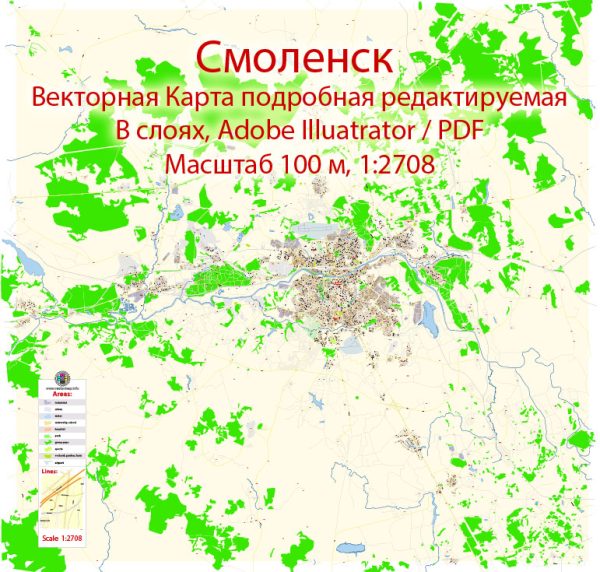Smolensk, located in western Russia, is one of the oldest and historically significant cities in the country. The city’s history dates back to the early medieval period, and it has played a crucial role in shaping the political, cultural, and economic landscape of the region. Here is a brief overview of the history of urban development in Smolensk:
- Early History: Smolensk was first mentioned in historical records in 863 AD. It served as a key fortress on the trade route between the Varangians and the Greeks. Due to its strategic location, the city became a center for trade and commerce.
- Medieval Period: Throughout the medieval period, Smolensk was frequently contested by various powers, including the Kievan Rus, Mongols, and Lithuanians. The city changed hands several times, and its fortifications were expanded and strengthened to withstand sieges.
- Lithuanian and Polish Rule: In the 14th century, Smolensk came under Lithuanian rule, and later, it became part of the Polish-Lithuanian Commonwealth. This period saw the construction of churches, cathedrals, and other architectural structures, reflecting the influence of both Western and Eastern European styles.
- Russian Empire: Smolensk was incorporated into the Russian Empire in the late 17th century after a series of wars between Russia and Poland. Under Russian rule, the city continued to grow, and new buildings were added. Smolensk became an important administrative and military center.
- Napoleonic Wars: The city gained international significance during the Napoleonic Wars in the early 19th century. The Battle of Smolensk in 1812 was a major conflict between Russian and French forces during Napoleon’s invasion of Russia.
- Soviet Era: During the Soviet era, Smolensk experienced further development and industrialization. The city played a role in World War II, and unfortunately, much of its historical architecture was damaged or destroyed during the conflict.
- Post-Soviet Period: After the dissolution of the Soviet Union in 1991, Smolensk, like many other cities in Russia, underwent changes in its economic and social structure. Efforts have been made to preserve and restore some of the historical sites that suffered damage during the war.
Today, Smolensk is a regional center with a mix of historical and modern elements. Its historical sites, including the Smolensk Kremlin and numerous churches, attract tourists interested in the rich history of this ancient city. The city’s urban development reflects its long and diverse history, with layers of architecture from different periods contributing to its unique character.


 Author: Kirill Shrayber, Ph.D.
Author: Kirill Shrayber, Ph.D.